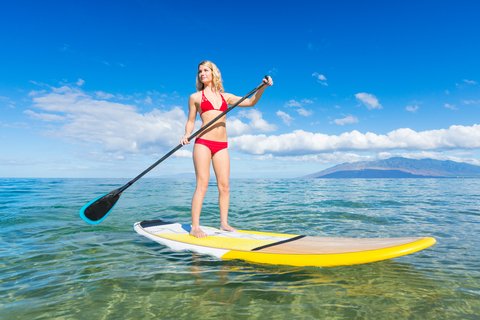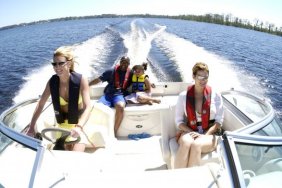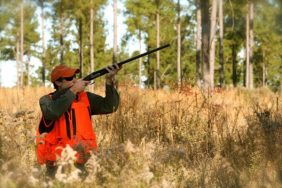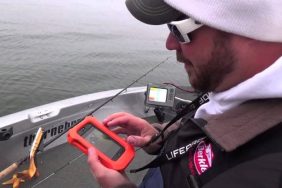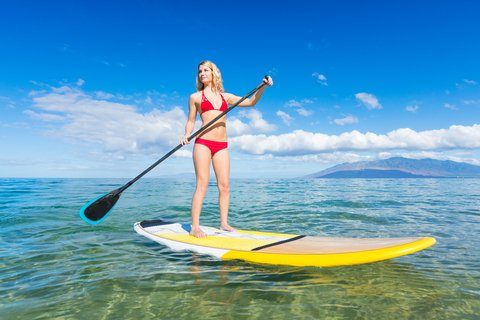
Stand up paddleboarding is one of the fastest growing sports in America. But as these human-powered watercraft become more common in navigable waterways and crowded harbors, there are safety issues that come with sharing the water with recreational boats and commercial vessels.
The sport has grown more than 38% participation from 2013 to 2014, according to Boat US. When you’re beyond the narrow limits of “a swimming, surfing or bathing area,” the US Coast Guard considers a paddleboard a vessel. So when you are navigating the paddleboard appropriate safety devices and practices are the rule.
First off, use common sense. Follow local navigation rules, and realize that other vessels are not as maneuverable. In general, a paddleboard is more able to turn and stop than a larger craft, so defensive paddling helps prevent collisions and mishaps. Always pass behind a boat if it’s going to be close.
The best and most courteous choice is to pick a route away from boat congestion and to avoid areas with heavy boat traffic. Boats will be traveling faster and carry a large wake, and they may have a blind spot that prevents good visibility. Don’t assume a boater can see you or be able to avoid you.
In narrow channels, stay as far right as possible and avoid crossing busy boat lanes. When you must cross, go perpendicular to the lane so the crossing is accomplished quickly. When there are several paddlers, cross in a compact group.
Follow the U.S. Coast Guard rules for appropriate gear and wear brightly-colored clothing to be more visible in the water. All paddlers must have a USCG-approved life jacket available.
A whistle or other sound-producing device should also be carried to warn other boaters. If you are on the water after sunset, you need to have a flashlight, headlamp or similar lighting source to warn boaters of your location. And a safety leash will be helpful in preventing potentially dangerous separation from your board.
Be a competent swimmer and know how to self-rescue and how to tow another board. Understand the hazards and how the elements may effect you: winds, tidal ranges, and currents present specific challenges. Whether you are a seasoned paddleboarder or new to the sport, take a safety course so you can safely enjoy this activity while obeying local regulations and general navigation rules.
